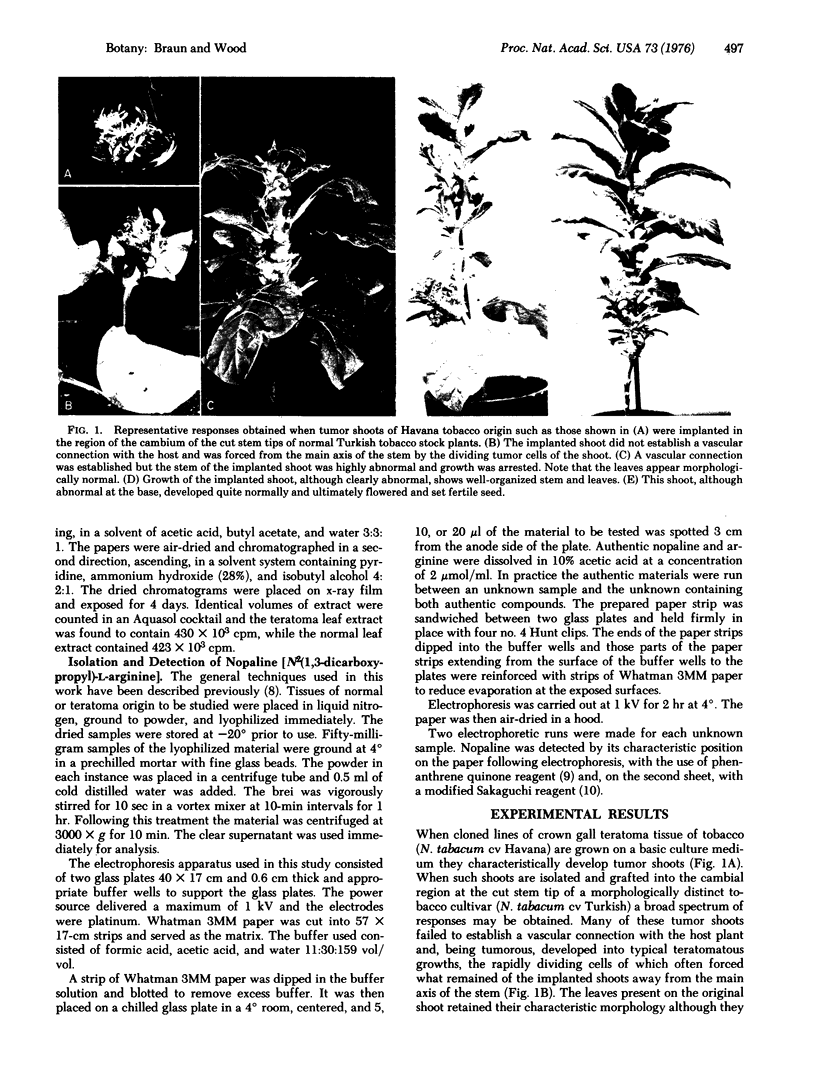Abstract
The neoplastic state in cells of tissues and organs that develop from cloned lines of crown gall teratomas of tobacco may be completely but reversibly suppressed. Stems and leaves found on teratoma shoots may appear morphologically normal and such organs contain all of the specialized cell types and are histologically and functionally indistinguishable from those found in normal tobacco shoots of comparable age. When however, specialized cells of several different kinds that are present in stems and leaves of the teratomas are excised from the plant and grown on a basic culture medium they again assume their neoplastic properties. The results of this study indicate that the morphogenetic factors and mechanisms that govern so precisely growth, cellular differentiation, and organogenesis during the normal course of development can completely suppress the tumorous state, leading to the formation of cells, tissues, and organs that appear normal in every respect but are, in fact, inherently neoplastic. Whether the normal or tumor phenotype is expressed appears to depend on the activation or repression of select biosynthetic systems, one of which, the auxin sytems, has been identified here.
Full text
PDF




Images in this article
Selected References
These references are in PubMed. This may not be the complete list of references from this article.
- Easley C. W. Combinations of specific color reactions useful in the peptide mapping technique. Biochim Biophys Acta. 1965 Sep 13;107(2):386–388. doi: 10.1016/0304-4165(65)90147-9. [DOI] [PubMed] [Google Scholar]
- Yamada S., Itano H. Phenanthrenequinone as an analytical reagent for arginine and other monosubstituted guanidines. Biochim Biophys Acta. 1966 Dec 28;130(2):538–540. doi: 10.1016/0304-4165(66)90256-x. [DOI] [PubMed] [Google Scholar]






